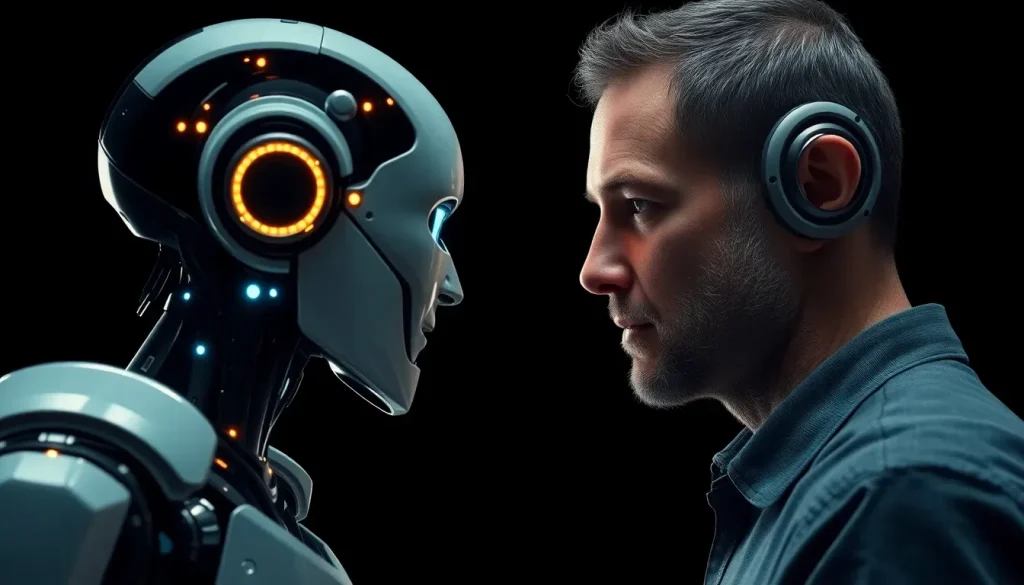Coste por hora de un robot humanoide con IA frente a un humano

The advent of generative artificial intelligence has profoundly transformed our perception and execution of tasks. Nowadays, whenever we browse social media or read news articles, it's hard not to assume that a significant portion of this content was generated by AI. The sheer volume of AI-produced material can be overwhelming, leading us to question the role of human creativity and labor. As AI technology advances, it increasingly replaces humans in various roles within companies. To understand the implications of this shift, recent studies have compared the costs associated with employing AI-driven humanoid robots against those of human workers, prompting a crucial question: is it worth it?
This evolution in the workplace has brought about a dichotomy—a mix of both benefits and drawbacks. On the positive side, AI can function as a virtual assistant, providing support and facilitating tasks that enhance productivity. However, the rise of AI also poses significant concerns regarding job displacement and the future of human labor.
Estimating the Costs of Building and Operating Humanoid Robots
As we navigate this uncertain future influenced by artificial intelligence, one critical factor stands out: the cost of building and maintaining humanoid robots. According to estimates, constructing a humanoid robot can cost around $30,000. This figure encompasses the initial production costs, while an additional $30,000 per year is required for its operation, which includes maintenance and supervision.
Breaking this down further, about $18,000 of the annual operational cost goes towards human supervision and coordination. If we consider the robot's operational hours, it is estimated to work approximately 6,600 hours annually, translating to about 330 days of work, averaging 20 hours a day.
Comparing Human Labor Costs with Robotic Alternatives
The disparity in labor costs between humans and robots is striking. A human worker is estimated to cost around $42.53 per hour. This figure includes a base salary of $60,000, accompanied by an additional 20% for social security (approximately $12,000) and other expenses (another $12,000). When we factor in the total annual cost, it amounts to about $84,000 for a human worker, who typically works around 1,975 hours per year.
- Annual salary: $60,000
- Social security (20%): $12,000
- Other expenses: $12,000
- Total annual cost for a human: $84,000
- Hourly cost: $42.53
In contrast, the hourly cost of a humanoid robot is projected to range from $5 to $14 per hour, depending on its efficiency and learning capability. This radical difference in cost can be attributed to the fact that robots can operate continuously without the same need for breaks or downtime as humans. Furthermore, as technology improves, the efficiency of these robots is expected to increase significantly, potentially reducing costs even further.
Human Workers vs. AI: The Future of Employment
As AI systems become more capable, the question arises: will they replace human workers? The potential for job displacement is a significant concern, particularly in sectors that rely heavily on routine tasks. However, it’s essential to recognize that while robots may excel in certain areas, they are not universally superior.
- Robots can work continuously without fatigue.
- They can perform repetitive tasks with high precision.
- Their efficiency tends to improve with advanced algorithms and machine learning.
Nevertheless, certain roles demand human creativity, emotional intelligence, and complex decision-making skills that robots currently cannot replicate. This raises the possibility of a collaborative future where humans and robots work alongside each other, leveraging their respective strengths.
Advantages and Disadvantages of Utilizing Robots
Implementing humanoid robots in the workplace presents both opportunities and challenges. Understanding these factors is crucial for businesses considering this transition.
- Advantages:
- Cost Efficiency: Significant savings in labor costs over time.
- Increased Productivity: Robots can work longer hours and complete tasks faster.
- Consistency: Robots produce uniform results, reducing variability.
- Disadvantages:
- Job Displacement: Potential loss of jobs for human workers.
- Initial Investment: High upfront costs for development and integration.
- Maintenance Needs: Ongoing costs associated with upkeep and repairs.
Can Humans and Robots Coexist in the Workplace?
The potential for collaboration between humans and robots raises intriguing possibilities. While robots can take over repetitive tasks, human workers can focus on areas that require critical thinking, creativity, and interpersonal skills. This synergy could lead to enhanced productivity and job satisfaction.
Moreover, as companies leverage AI tools, training programs can be implemented to help workers adapt to new technologies, ensuring they remain valuable assets in the workforce. This could result in a workforce that is more skilled and adaptable, equipped to handle a dynamic job market shaped by technological advancements.
As we look ahead, the integration of AI and robots into our work lives appears inevitable. The path forward may involve a mix of competition and collaboration, requiring both workers and technology to evolve and adapt. The debate over the economic implications of robots versus humans continues, but the potential for innovation and improved efficiency is undeniable.
For further insights into the cost and implications of humanoid robots, consider watching this informative video:




Leave a Reply